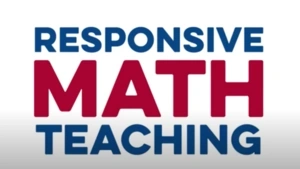What is Responsive Math Teaching?
Responsive math teaching (RMT) is instruction where the teacher continuously elicits information about what students currently know and understand and responds in ways that move them forward in relation to developmental and grade-level mathematical goals. This occurs throughout the instructional cycle, which includes:
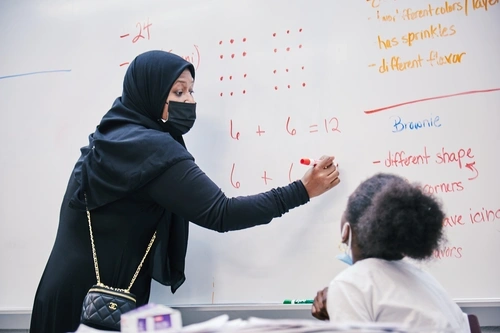
- Selecting and launching cognitively demanding tasks that are open to multiple entry points and solution strategies;
- Engaging students in productive, struggle, discourse, and collaboration;
- Having students share strategies and defend their solutions;
- Building connections and deeper and more sophisticated understanding of core concepts, strategies, and procedures;
- Collecting formative assessment information to inform instruction.
Recognizing what students know and are able to do and leveraging that to move towards higher level reasoning and problem solving ensures equity and access to mathematics for all students. When the teacher responds simultaneously to student thinking and a mathematical goal, each and every student is recognized as a capable learner who can develop deep, meaningful, and flexible understandings.
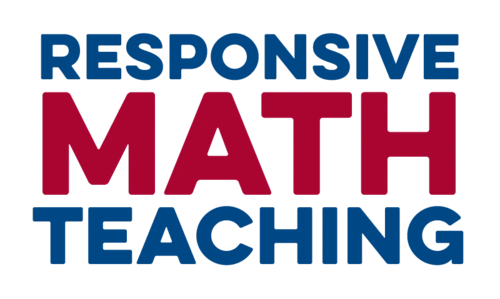
The Four Components of RMT
RMT is built around four core components:
- Developing a shared understanding of high-quality math instruction
- Ongoing professional development
- Support for classroom implementation
- Leadership development for sustainability
Professional Development
The RMT professional development model has three phases.
In the first phase, teachers EXPERIENCE responsive math instruction as learners and reflect on that experience in relation to facilitation practices.
In the next phase, teachers learn about, try out, and TEACH with new instructional practices while engaging in grade-level (and sometimes cross-school) COLLABORATIVE LESSION DESIGN groups.
Some teachers and teacher leaders may elect to move on to the LEAD phase, where they learn to plan and facilitate Experience, Teach, and/or Collaborative Lesson Design professional development sessions.

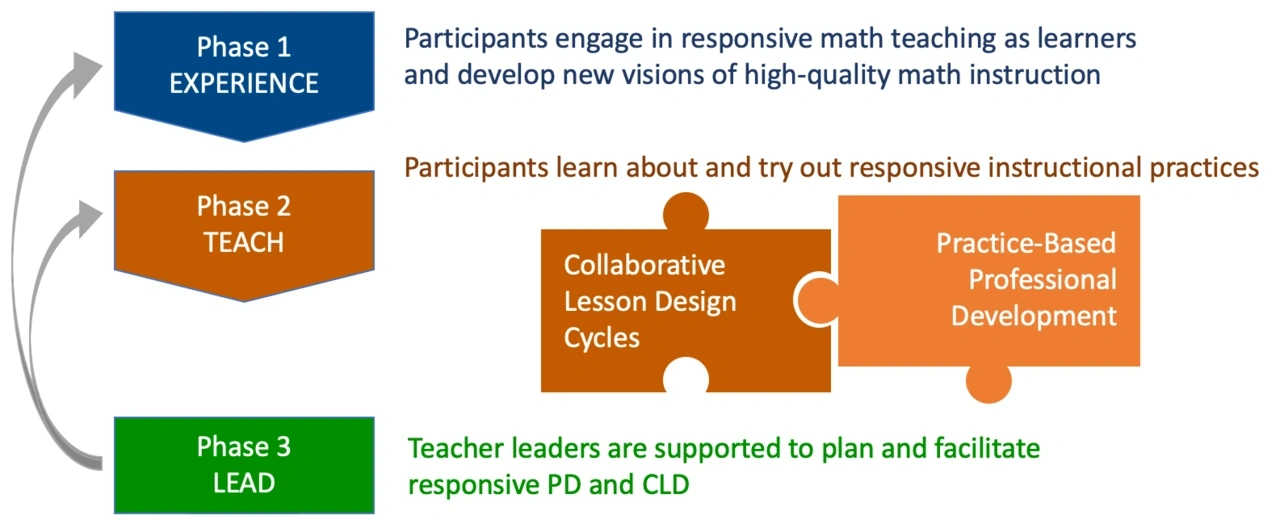
Cross-School Collaborative Lesson Design
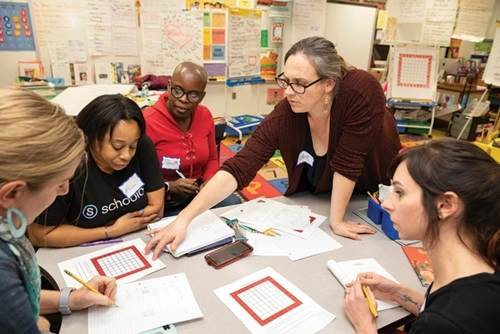
Teachers who have completed phase 1 with RMT participate in Collaborative Lesson Design cycles with teachers working at the same grade level. In these planning teams, teachers and leaders engage in planning, enacting, and debriefing RMT lessons. The goal of Collaborative Lesson Design is for teachers to improve their ability to plan and enact responsive math lessons.
Building Sustainable Leadership Capacity
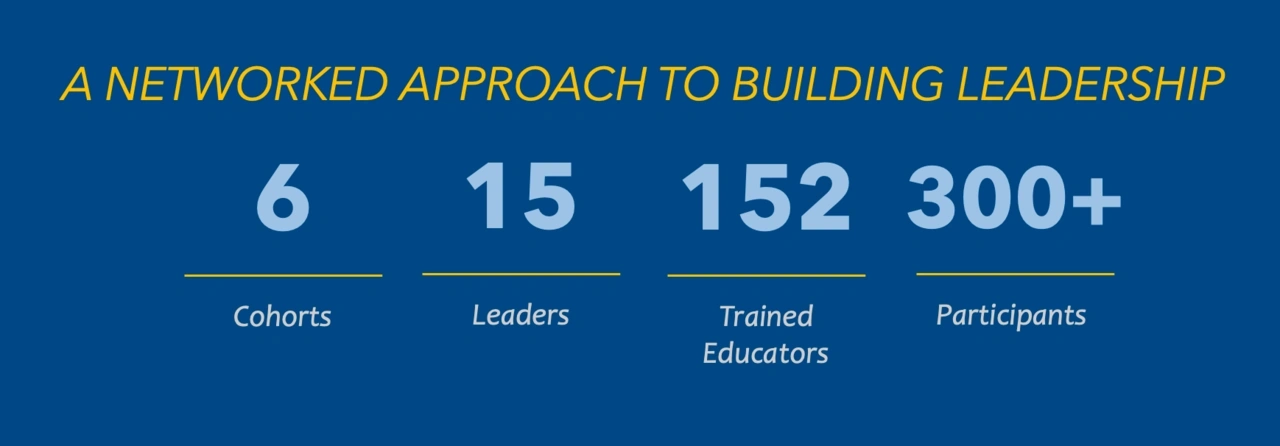
RMT provides a much-needed on-ramp for professional growth and leadership development: over time many of our participants have moved from classroom teacher roles into school-based leadership roles or district-level leadership positions. Through a partnership with the School District of Philadelphia, funded by the National Science Foundation, RMT worked with six cohorts of teachers and leaders, reaching more than 300 educators, and developing 15 math instructional leaders who support teachers in their schools and across Learning Network 2. Leaders took on network-wide responsibilities, reducing the need for university-based support, and ensuring sustainability of the work.
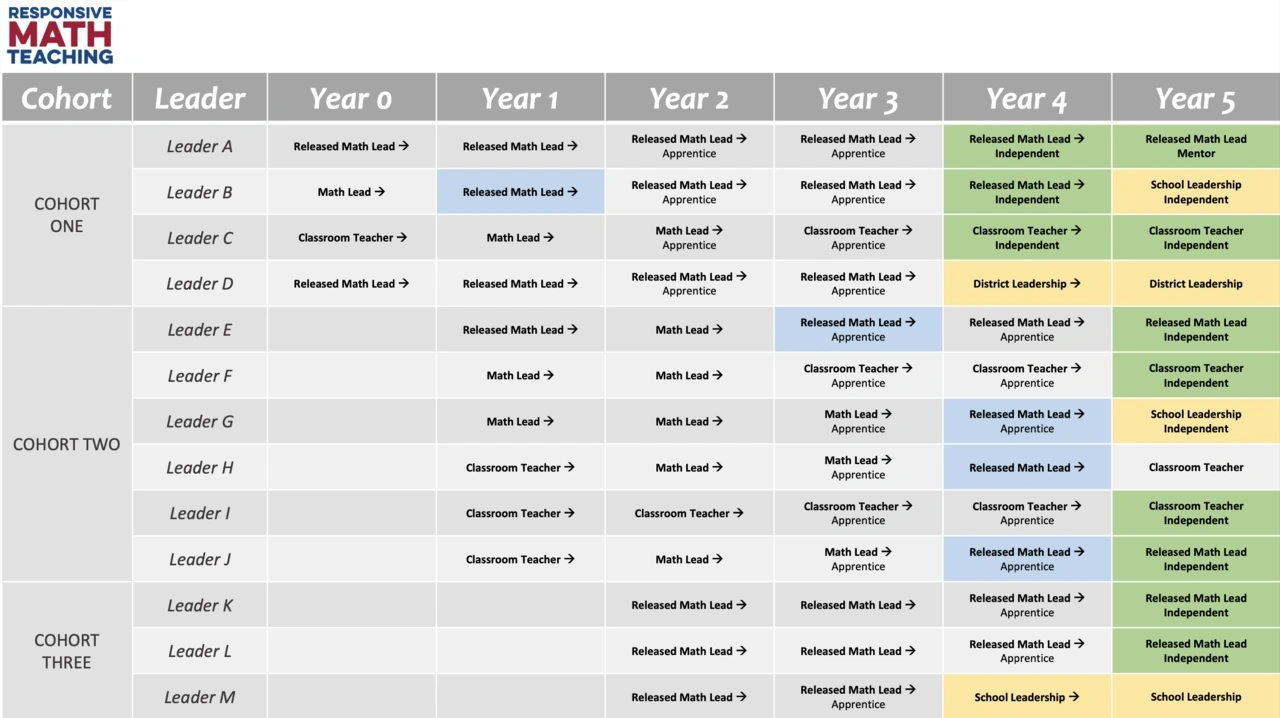
Resources for Partners
RMT Task Bank available to educators with 1+ years of experience with RMT PD
Research
- “Teaching Them How to Fish”: Learning to Learn and Teach Responsively
- A Model for Developing Sustainable Math Instructional Leadership
- Developing Teachers’ Instructional Vision for Inclusive Math Practice: The Role of Epistemic Experience
- Tracing Take-up across Practice-based Professional Development and Collaborative Lesson Design
- Facilitating Collaborative Discussions around Video Artifacts of Mathematics Teaching
Partners

RMT is a part of Penn GSE’s Office of School and Community Engagement and partners with the School District of Philadelphia.
Team & Contact
Caroline B. Ebby
Brittany Hess
Jennifer Valerio
Joy Anderson Davis
Lindsay Goldsmith-Markey
Lizzy Pecora
This project is funded by the National Science Foundation (DRK12 1813048)

